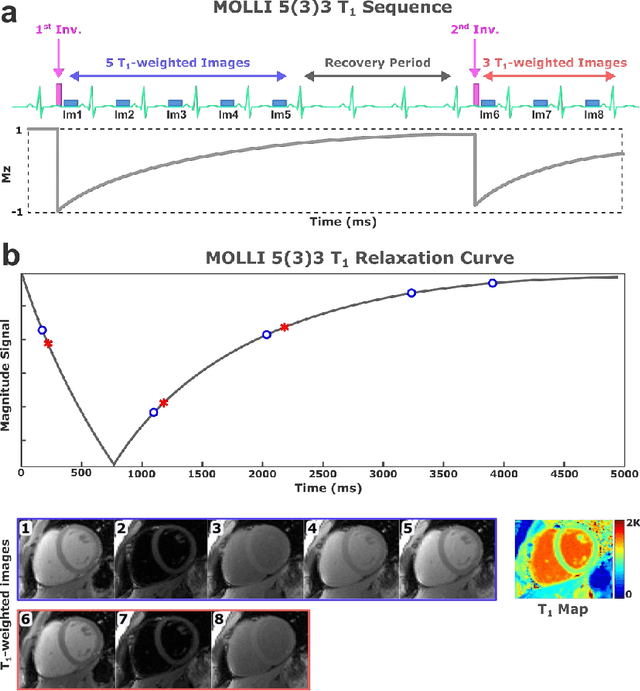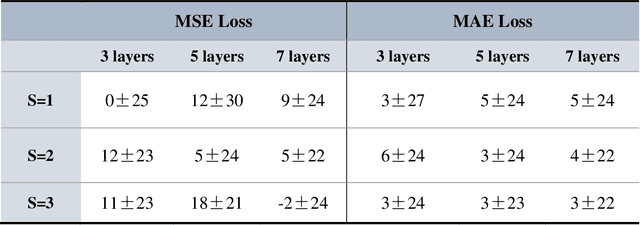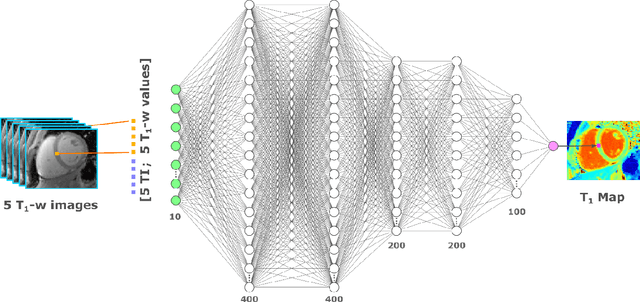Tuyen Yankama
$\textbf{MyoMapNet}$: Accelerated Modified Look-Locker Inversion Recovery Myocardial T1 Mapping via Neural Networks
Mar 31, 2021



Abstract:Purpose: To develop and evaluate MyoMapNet, a rapid myocardial T1 mapping approach that uses neural networks (NN) to estimate voxel-wise myocardial T1 and extracellular (ECV) from T1-weighted images collected after a single inversion pulse over 4-5 heartbeats. Method: MyoMapNet utilizes a simple fully-connected NN to estimate T1 values from 5 (native) or 4 (post-contrast) T1-weighted images. Native MOLLI-5(3)3 T1 was collected in 717 subjects (386 males, 55$\pm$16.5 years) and post-contrast MOLLI-4(1)3(1)2 in 535 subjects (232 male, 56.5$\pm$15 years). The dataset was divided into training (80%) and testing (20%), where 20% of the training set was used to optimize MyoMapNet architecture (size and loss functions). We used MyoMapNet to estimate T1 and ECV maps with the first 5 (native) or 4 (post-contrast) T1-weighted images from the corresponding MOLLI sequence compared to the conventional and an abbreviated MOLLI using similar number of T1-weighted images with 3-parameter curve-fitting. Results: In our preliminary optimizaiton step, we determined that a 5-layers NN trained using mean-absolute-error loss yields lower estimation errors and was used subsequently in independent testing study. The myocardial T1 by MyoMapNet was similar to MOLLI (1200$\pm$45ms vs. 1199$\pm$46ms; P=0.3 for native T1, and 27.3$\pm$3.5% vs. 27.1$\pm$4%; P=0.4 for ECV). MyoMapNet had significantly smaller errors in T1 estimations compared to abbreviated-MOLLI (1$\pm$17ms vs. 31$\pm$34ms, P<0.01 for in native T1, and 0.1$\pm$1.3% vs. 1.9$\pm$2.5%, P<0.01 for ECV). The duration of T1 estimation was approximately 2 ms per slice using MyoMapNet. Conclusion: MyoMapNet T1 mapping enables myocardial T1 quantification in 4-5 heartbeats with near-instantaneous map estimation time with similar accuracy and precision as MOLLI. Keywords: Myocardial T1 mapping, MOLLI, T1 reconstruction, Neural network, Deep Learning.
 Add to Chrome
Add to Chrome Add to Firefox
Add to Firefox Add to Edge
Add to Edge